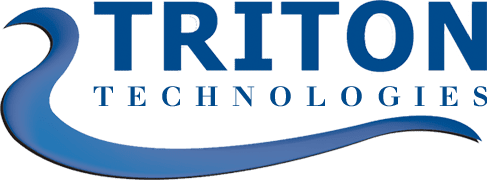Developing a robust IT strategy framework is essential for businesses aiming to align their technology initiatives with their overall strategic objectives. An IT strategy framework acts as a guiding blueprint, helping organizations manage IT resources effectively, address challenges, and seize opportunities to enhance business performance.
While the planning process may appear intensive, it is indispensable. Engaging with a managed services provider for IT strategy services facilitates the development of a robust IT strategy framework tailored to meet your technology needs within budget constraints. This article explores the key aspects of creating an IT strategy framework, its importance, and the steps involved in its development.
Understanding an IT Strategy Framework
An IT strategy framework is a comprehensive plan that details how information technology will be utilized to support and enhance the business’s strategic goals. It includes policies, procedures, and best practices that guide decision-making processes to ensure IT initiatives are in sync with business objectives. By incorporating IT planning into the broader business strategy, companies can better allocate resources, mitigate risks, and drive innovation.
Creating an effective IT strategy framework involves a systematic approach that begins with a comprehensive assessment of current IT capabilities and alignment with business goals. By conducting a thorough analysis, organizations can identify strengths, weaknesses, opportunities, and threats (SWOT) related to their IT infrastructure. This foundational understanding allows for strategic decision-making in prioritizing investments, optimizing resource allocation, and leveraging technology to drive innovation and operational efficiency. The development process also entails setting clear objectives, establishing performance metrics, and defining a roadmap for implementation and continuous evaluation. Through these steps, businesses can ensure that their IT strategy framework remains adaptive and responsive to evolving market dynamics and organizational needs.
The Importance of IT Strategic Planning
IT strategic planning is critical for establishing clear goals, optimizing resource allocation, and ensuring that technology investments yield maximum value. Without a well-structured IT strategy framework, businesses risk misaligning their IT initiatives with their strategic goals, leading to wasted resources, missed opportunities, and inefficiencies.
Explore our Managed Service Offerings
Worcester’s Top Managed Service Provider
Why Your Business Needs an IT Strategy Framework
Creating and implementing an IT strategy framework provides numerous benefits. Here are several benefits of developing an IT strategy plan:
1. Enhanced Decision-Making Processes
An IT strategy framework provides a structured approach that enhances decision-making across the organization. By clearly defining goals and aligning IT initiatives with business objectives, organizations can make well-informed decisions that support strategic priorities. This structured approach ensures that IT investments and resources are allocated effectively, maximizing their impact on business outcomes.
2. Optimal Resource Allocation
One of the key benefits of an IT strategy framework is its ability to optimize resource allocation. By assessing current IT capabilities and aligning them with business needs, organizations can eliminate redundant efforts and streamline resource utilization. This not only improves cost efficiency but also ensures that both human and financial resources are used effectively to support business goals.
3. Improved Organizational Agility
In today’s dynamic business environment, agility is crucial for responding quickly to market changes and customer demands. An IT strategy framework enhances organizational agility by enabling rapid adaptation of IT systems and processes. This flexibility allows businesses to seize opportunities and mitigate risks promptly, maintaining a competitive edge in the marketplace.
4. Strategic Alignment with Business Objectives
Effective IT strategy frameworks ensure that IT initiatives are closely aligned with overall business objectives. By integrating IT planning with broader organizational goals, companies can prioritize projects that contribute most effectively to strategic priorities. This alignment not only enhances operational efficiency but also fosters a cohesive approach to achieving business success.
5. Cost Efficiency and Reduction of Redundancy
Implementing an IT strategy framework reduces costs by eliminating redundant IT efforts and optimizing resource use. By identifying inefficiencies and streamlining processes, organizations can achieve significant cost savings while maintaining or enhancing service delivery and operational effectiveness.
6. Competitive Advantage through Technology
Strategic use of technology is a cornerstone of competitive advantage in modern business. An IT strategy framework helps organizations leverage technology effectively to differentiate themselves in the marketplace. Whether through innovative customer solutions, operational efficiencies, or new market opportunities, strategic IT investments can significantly enhance an organization’s competitive position.
7. Foster Innovation and Growth
IT strategy frameworks provide a platform for fostering innovation within organizations. By aligning IT capabilities with business goals, companies can encourage continuous improvement and exploration of new technologies. This proactive approach to innovation not only supports current business needs but also positions the organization for future growth and adaptation to industry changes.
8. Risk Management and Mitigation
Effective risk management is integral to the success of any business strategy. IT strategy frameworks include mechanisms for identifying, assessing, and mitigating IT-related risks. By implementing robust security measures, disaster recovery plans, and compliance frameworks, organizations can safeguard their operations and protect against potential threats.
9. Enhanced Transparency and Accountability
Transparency and accountability are essential for gaining stakeholder trust and support. An IT strategy framework promotes transparency by clearly documenting IT objectives, milestones, and performance metrics. Regular reporting and communication ensure that stakeholders are informed about progress, challenges, and successes, fostering a culture of accountability and collaboration.
10. Promotes Collaboration Across Departments
Collaboration is key to the success of IT initiatives within an organization. An IT strategy framework encourages collaboration by aligning IT projects with broader business goals and involving stakeholders from various departments. By promoting cross-functional teamwork and shared objectives, organizations can enhance communication, innovation, and overall project success.
Discover our IT Solutions for Your Industry
Worcester’s Top Managed Service Provider
Creating a Template for Your IT Strategy Framework
Developing a template for an IT strategy framework can streamline the planning process and ensure consistency. The template should include the following:
Executive Summary
The executive summary of an IT strategy framework provides a concise overview of the entire plan, highlighting its key components and objectives. It serves as a strategic communication tool for stakeholders, executives, and decision-makers to quickly grasp the essence of the IT strategy without delving into detailed documents. This summary outlines the purpose of the IT strategy framework, its intended outcomes, and how it aligns with the organization’s overall mission and vision. By presenting a high-level view, the executive summary ensures that all stakeholders have a common understanding of the IT strategy’s strategic direction and its potential impact on the organization’s growth and competitiveness.
Vision and Mission Statement
The vision and mission statement of the IT strategy framework articulate the strategic direction and purpose of the IT initiatives within the broader organizational context. The vision statement defines the desired future state that the IT strategy aims to achieve, outlining the organization’s aspirations and long-term goals in leveraging technology. Concurrently, the mission statement clarifies the fundamental purpose and scope of the IT strategy, specifying how IT resources will be utilized to support the organization’s overall mission. Together, these statements provide a guiding framework that helps align IT activities with business objectives, fostering clarity and coherence in strategic decision-making.
Objectives and Goals
Objectives and goals within the IT strategy framework delineate specific, measurable outcomes that the organization aims to achieve through its IT initiatives. Objectives are overarching statements that define the broad aims and intentions of the strategy, while goals break down these objectives into actionable and measurable targets. By establishing clear objectives and goals, organizations can effectively prioritize IT investments, allocate resources appropriately, and monitor progress towards achieving desired outcomes. This framework ensures that IT efforts are aligned with strategic priorities, enabling focused efforts on activities that contribute most effectively to organizational success.
SWOT Analysis
The SWOT (Strengths, Weaknesses, Opportunities, Threats) analysis is a critical component of the IT strategy framework, providing a comprehensive assessment of the internal and external factors that may impact the strategy’s success. It identifies strengths and weaknesses within the organization’s current IT capabilities, opportunities for leveraging technology to gain competitive advantages, and potential threats that could hinder IT initiatives. By conducting a thorough SWOT analysis, organizations can make informed decisions about resource allocation, risk management strategies, and prioritization of IT projects. This analysis serves as a foundation for developing tailored strategies that capitalize on strengths, mitigate weaknesses, exploit opportunities, and proactively address threats.
Strategic Initiatives
Strategic initiatives outlined in the IT strategy framework detail specific actions and projects aimed at achieving the defined objectives and goals. These initiatives translate strategic intent into practical steps that guide the implementation of the IT strategy. Each initiative specifies the scope, timeline, resources required, and expected outcomes, ensuring clarity on how IT investments will contribute to organizational success. By mapping out strategic initiatives, organizations can effectively allocate resources, assign responsibilities, and monitor progress towards achieving strategic objectives. This structured approach facilitates coordinated efforts across departments, promoting alignment with overall business objectives and enhancing the likelihood of achieving desired outcomes.
Resource Allocation Plans
Resource allocation plans within the IT strategy framework outline how IT resources, including human, financial, and technological assets, will be allocated to support strategic initiatives. This involves identifying the specific resources required for each initiative, estimating resource demands, and optimizing resource utilization to maximize efficiency and effectiveness. By aligning resource allocation with strategic priorities, organizations can ensure that investments in IT contribute directly to achieving business goals while minimizing wastage and redundancy. Clear resource allocation plans facilitate transparency and accountability in resource management, enabling stakeholders to make informed decisions about resource allocation priorities based on strategic alignment and expected returns on investment.
Risk Management Plan
The risk management plan in the IT strategy framework identifies potential risks and outlines strategies to mitigate these risks effectively. It involves assessing both internal and external risks that could impact the successful implementation of IT initiatives, such as technological challenges, regulatory changes, cybersecurity threats, and organizational resistance to change. The plan includes risk identification, risk assessment (including probability and impact analysis), risk mitigation strategies, contingency plans, and risk monitoring and control mechanisms. By proactively addressing risks, organizations can minimize disruptions, safeguard project timelines and budgets, and enhance the overall resilience of IT operations. A robust risk management plan ensures that potential threats are identified early and managed efficiently, supporting the successful execution of strategic IT initiatives.
Performance Metrics
Performance metrics within the IT strategy framework establish clear benchmarks and indicators to measure the success and effectiveness of IT initiatives. These metrics align with strategic objectives and goals, providing a quantitative and qualitative framework for assessing progress and outcomes. Key performance indicators (KPIs) may include metrics related to operational efficiency, cost-effectiveness, service delivery, customer satisfaction, innovation impact, and overall business performance. By defining relevant performance metrics, organizations can track performance against established targets, identify areas for improvement, and make data-driven decisions to optimize IT strategy implementation. Regular monitoring and analysis of performance metrics enable continuous improvement, ensuring that IT efforts remain aligned with evolving business needs and strategic priorities.
Implementation Plan
The implementation plan within the IT strategy framework outlines the detailed steps, timelines, responsibilities, and resources required to execute strategic initiatives effectively. It provides a roadmap for translating strategic intent into actionable tasks and activities, ensuring systematic and coordinated implementation of the IT strategy across the organization. The plan includes phases of implementation, milestones, dependencies between tasks, communication and change management strategies, and mechanisms for monitoring progress and addressing issues. By following a structured implementation plan, organizations can minimize disruptions, enhance collaboration among stakeholders, and achieve alignment between IT activities and business objectives. Effective implementation planning facilitates timely execution of IT projects, mitigates risks, and maximizes the likelihood of achieving desired outcomes within specified timelines and budgets.
Review and Update Cycle
The review and update cycle in the IT strategy framework establishes a systematic process for evaluating the effectiveness of the strategy, gathering feedback, and making necessary adjustments to adapt to changing business needs and technological advancements. It involves regular assessments of IT strategy performance against established objectives and goals, conducting post-implementation reviews, and soliciting input from stakeholders and key decision-makers. Based on these evaluations, organizations can identify strengths, weaknesses, emerging opportunities, and potential threats that may necessitate adjustments to the IT strategy. By embracing a continuous improvement mindset, organizations can enhance agility, responsiveness, and resilience in adapting to dynamic market conditions and technological landscapes. The review and update cycle ensures that the IT strategy remains relevant, aligned with strategic priorities, and capable of driving sustainable growth and innovation within the organization.
Common Mistakes in IT Strategy Alignment
Aligning IT strategy with business goals is a complex task that requires careful consideration. Several common pitfalls can hinder successful alignment and implementation:
Lack of Strategic Alignment
Failing to align IT projects with broader business goals and objectives can lead to initiatives that do not contribute effectively to organizational growth or efficiency.
Insufficient Planning
Rushing into IT projects without thorough planning can result in inadequate requirements gathering, unclear objectives, and poorly defined scopes, ultimately leading to project delays and cost overruns.
Ignoring Stakeholder Involvement
Not engaging key stakeholders, including business leaders, end-users, and IT teams, in the planning and decision-making process can result in resistance, conflicting priorities, and diminished project support.
Mismanagement of Resources
Poor allocation of resources, such as budgetary constraints or inadequate staffing, can impede project success and undermine overall organizational performance.
Poor Change Management
Inadequate management of organizational change can lead to low adoption rates of new technologies, employee resistance, and failure to achieve desired business outcomes.
Lack of Clear Metrics
Failing to establish clear metrics and Key Performance Indicators (KPIs) for measuring project success can make it challenging to monitor progress, identify areas for improvement, and justify investments.
Overlooking Risk Management
Neglecting to identify, assess, and mitigate risks associated with IT projects can result in unexpected challenges, project delays, and increased costs.
Technology Over Business Needs
Prioritizing technological solutions over addressing actual business needs can lead to implementations that do not deliver tangible benefits or address critical organizational challenges effectively.
By avoiding these common missteps and adopting a strategic approach to IT strategy alignment, organizations can enhance their ability to leverage technology effectively to achieve business goals and drive sustainable growth.
Discover Our Compliance Management Solutions
Worcester’s Leading Provider of Compliance Services
How Triton Technologies Can Help
At Triton Technologies, we specialize in Managed Services, IT Support, Compliance Management, and Industry-specific IT Solutions. We offer a comprehensive range of services to support businesses in developing and implementing effective IT strategy frameworks. Backed by our team of seasoned IT strategy consultants, we provide tailored expert advice to meet the specific needs of each organization.
We excel in aligning your IT initiatives with your business objectives, ensuring that your technology investments deliver maximum value. Triton Technologies conducts thorough assessments of your current IT environments, pinpointing gaps and opportunities for enhancement. Our guidance covers resource allocation, risk management, and establishing performance metrics, resulting in a well-rounded and efficient IT strategy plan. Our expertise in change management ensures seamless adoption of IT strategies throughout your organization.
By partnering with Triton Technologies, you enhance transparency in your IT strategy development, fostering trust and accountability. We also offer continuous support to promote ongoing learning and improvement, enabling your organization to stay ahead in a rapidly evolving technological landscape.
In today’s dynamic business environment, Triton Technologies simplifies the development of your IT strategy frameworks, empowering your organization to navigate technological complexities confidently. Our collaborative approach and proven methodologies empower you to optimize IT resources, mitigate risks, and capitalize on emerging opportunities, driving competitive advantage and ensuring sustained business success. Our service areas include Worcester, MA, with remote offices in Rhode Island, Connecticut, New York, British Virgin Islands, and Dublin, Ireland, while serving businesses globally.



